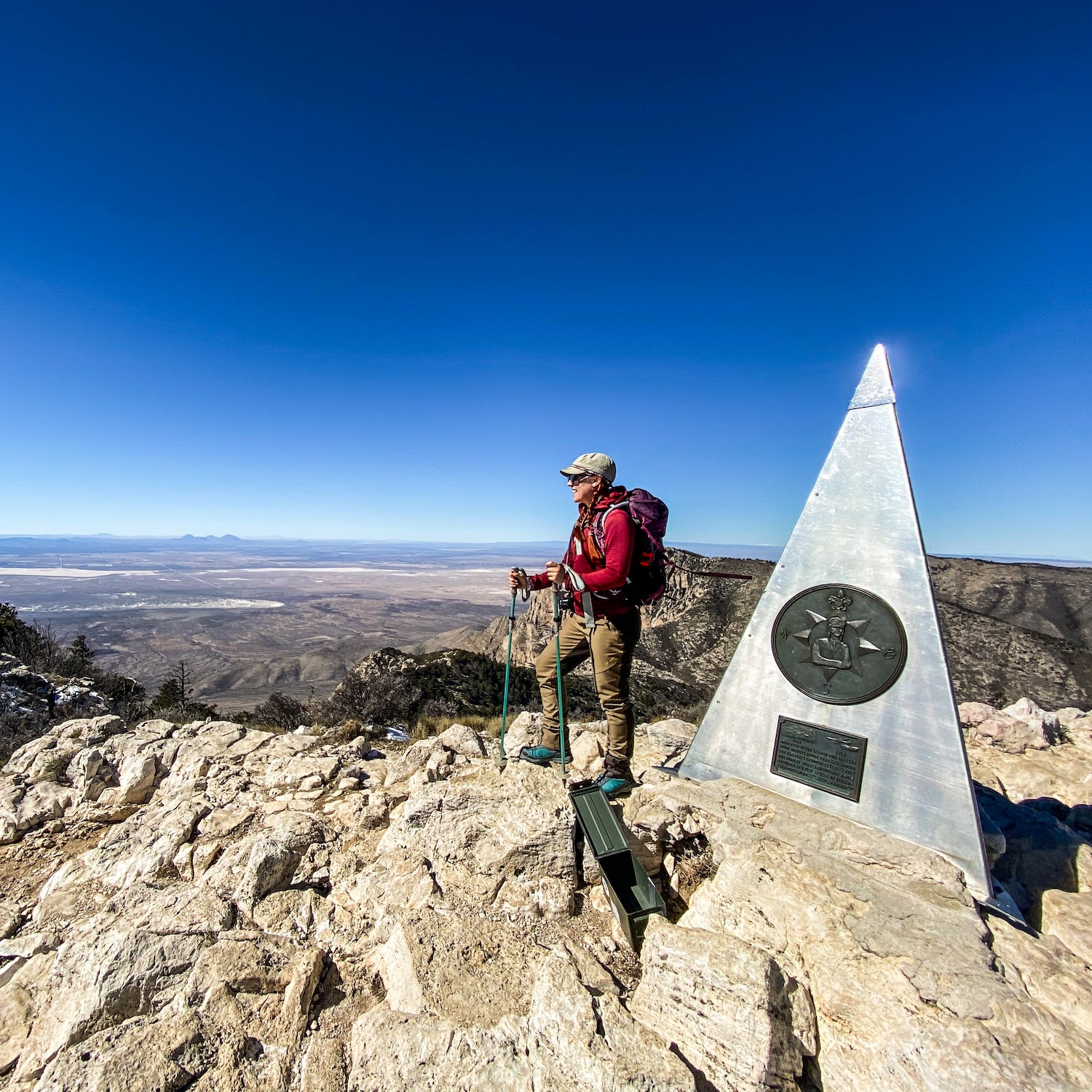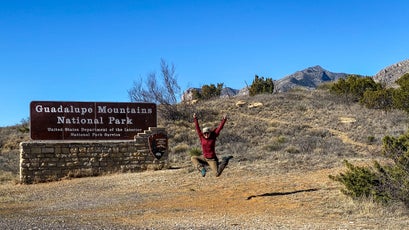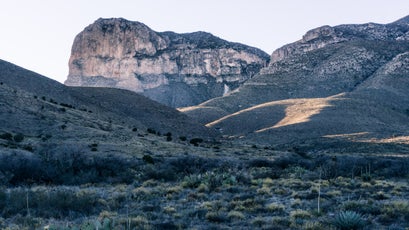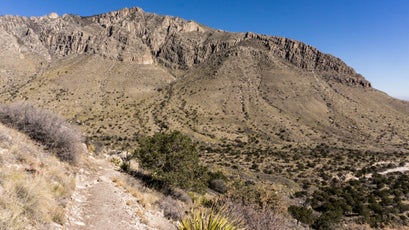62 Parks Traveler┬ástarted with a simple goal: to visit every U.S. national park in one year. Avid backpacker and public-lands nerd┬á┬ásaved up, built out a tiny van to travel and live in, and hit the road. The parks as we know them are rapidly changing, and she┬áwanted to see them before itÔÇÖs too late.
Pennington is committed to following CDC guidelines during the COVID-19 pandemic to ensure the safety of herself and others. SheÔÇÖs currently on a travel break until the parks begin to reopen. In the meantime, weÔÇÖll continue to publish her previously completed parks to help you take your mind off the pandemic and plan for future adventures.
Believe it or not, I grew up in Texas. I didnÔÇÖt love it. It was flat, hot, and humid. In summer┬áit felt like I was sucking warm steam through a straw just to breathe. Boy, I wish I had known about Guadalupe Mountains National Park.
Located in a far-flung corner of West Texas, just 30 minutes from Carlsbad Caverns, the park is a magical respite from the arid tract of the Chihuahuan Desert to the south. Much like the stateÔÇÖs only other national park, Big Bend, Guadalupe Mountains possesses that rare, island-in-the-sky vibe that makes hiking through it feel otherworldly.
The big vistas, ponderosa pine forests, and high-mountain wildlife that I yearned for as a kid were all there in spades. The parkÔÇÖs main attraction is 8,751-foot Guadalupe Peak, the top of Texas, which many people┬áclimb.
I got a late start one morning on a brisk February weekend, hoping to avoid the 50-to-60-mile-per-hour gusts of wind that are common on the summit in winter. Lucky for me, it was a sunny, bluebird day. Park visitors were out in droves. Everywhere I looked, there were groups of college dudes or father-son teams in boots and baseball caps, ready to tackle the stateÔÇÖs high point.
As I ascended from the trailhead at 5,800 feet, I swooned at the panoramic views of nearby Hunter Peak and the vast desert below. One of the most striking things about Guadalupe Peak Trail is the way it traverses a series of radically different riparian zones, from the water-starved desert to mountaintop forests of pine and fir. In a park thatÔÇÖs home to over 1,000 species of plants, some of which only exist in these mountains, it was a great way to see the lush biodiversity firsthand.
My breath began to quicken┬áas the altitude gripped my lungs at around 8,000 feet. I passed a forlorn teenager hunched over a boulder, his enthusiastic dad goading┬áhim toward┬áthe summit. The peak was a rite of passage not everyone wanted to endure, it seemed. The boy┬áasked me, ÔÇťI guess itÔÇÖs too late to turn back now, right?ÔÇŁ
ÔÇťRight!ÔÇŁ I chimed in.┬áÔÇťYouÔÇÖre only a mile away, and the views from the summit will totally be worth it.ÔÇŁ
I pressed onward, mouth agape as my first glimpse of Guadalupe MountainsÔÇÖ so-called┬áEl Capitan┬ácame into view:┬áa┬áremarkable, thousand-foot sheer cliff of crumbling late-Permian rock sprouting up from the desert floor.
Just a few more steps, and I had summited Guadalupe Peak, standing face to face with a silver pyramidal summit marker. The day was a success.
As I stood at the top of Texas, I thought a lot about how dramatically your image of a place can change once youÔÇÖve left it. The town I was born in lies at a humble 72 feet above sea level, and I didnÔÇÖt experience real mountains until I moved to California.
But┬ámaybe I needed a suffocating suburb to leave to┬ábecome the person I am today. Maybe this summit was a rite of passage I wasnÔÇÖt meant to take until the age of 32.
Better late than never.
62 Parks Traveler Guadalupe Mountains Info
Size: 86,367 acres
Location: West Texas
Created In: 1972 (national park)
Best For: Hiking, horseback riding, backpacking, car camping, peak bagging
When to Go: Visit in spring (37 to 85 degrees), fall (55 to 85 degrees), or winter (30 to 62 degrees). Avoid strenuous summit hikes in the summer, when temperatures can hit 100 degrees.
Where to Stay: The park offers two vehicle campgrounds,  to the north and  to the south. There are also ten  spread throughout the park for solitude-seeking hikers.
Mini ║┌┴¤│ď╣¤═°: Enjoy the sunset from . Motor┬áout on a┬áscenic, 43-mile drive from the Pine Springs Visitor Center to check out a different view of the Guadalupe Mountains. An easy┬áone-mile hike from the parking area will take you over a small field of gypsum sand dunes and face to face with an epic panorama of the parkÔÇÖs most famous peaks.
Mega ║┌┴¤│ď╣¤═°: Hike to the top of Texas┬áon the Guadalupe Peak Trail. This 8.5-mile round-trip┬átrek is the most popular in the park, climbing 3,000 vertical feet from the Pine Springs Campground. If youÔÇÖve got the time, grab a permit and backcountry-camp a mile below the summit to enjoy sweeping vistas┬áof the Chihuahuan Desert and Guadalupe Peak at sunrise.





